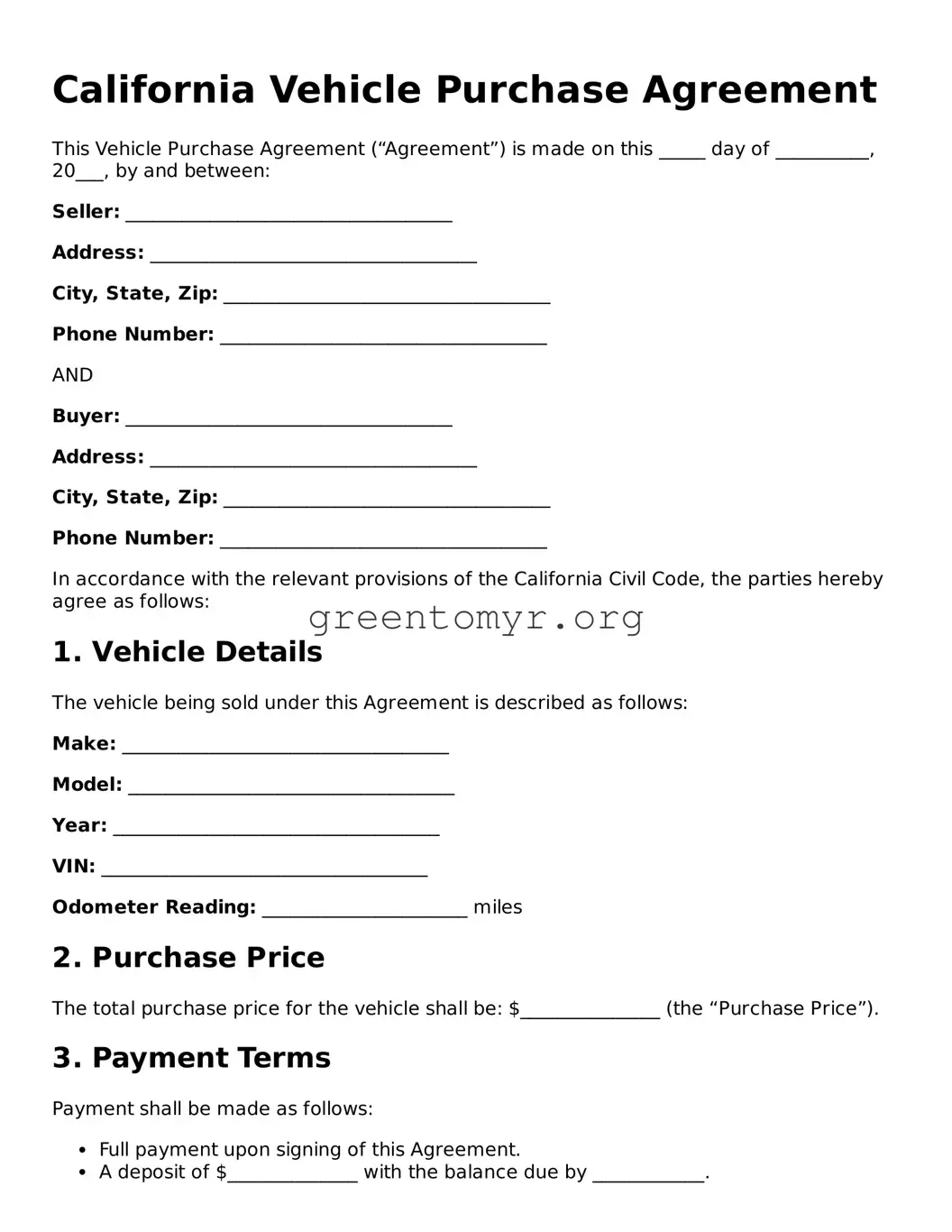California Vehicle Purchase Agreement
This Vehicle Purchase Agreement (“Agreement”) is made on this _____ day of __________, 20___, by and between:
Seller: ___________________________________
Address: ___________________________________
City, State, Zip: ___________________________________
Phone Number: ___________________________________
AND
Buyer: ___________________________________
Address: ___________________________________
City, State, Zip: ___________________________________
Phone Number: ___________________________________
In accordance with the relevant provisions of the California Civil Code, the parties hereby agree as follows:
1. Vehicle Details
The vehicle being sold under this Agreement is described as follows:
Make: ___________________________________
Model: ___________________________________
Year: ___________________________________
VIN: ___________________________________
Odometer Reading: ______________________ miles
2. Purchase Price
The total purchase price for the vehicle shall be: $_______________ (the “Purchase Price”).
3. Payment Terms
Payment shall be made as follows:
- Full payment upon signing of this Agreement.
- A deposit of $______________ with the balance due by ____________.
4. Delivery of Vehicle
The Seller agrees to deliver the vehicle to the Buyer upon receipt of the Purchase Price. Delivery shall occur at the following location:
Address: ___________________________________
5. Representations and Warranties
The Seller warrants that:
- The Seller is the legal owner of the vehicle.
- The vehicle is free of liens and encumbrances.
- There are no known defects affecting the vehicle's operation.
6. Governing Law
This Agreement shall be governed by and construed in accordance with the laws of the State of California.
7. Signatures
By signing below, both parties agree to the terms outlined in this Agreement:
Seller Signature: _______________________________ Date: _______________
Buyer Signature: _______________________________ Date: _______________
